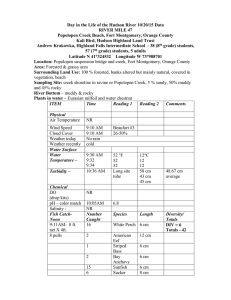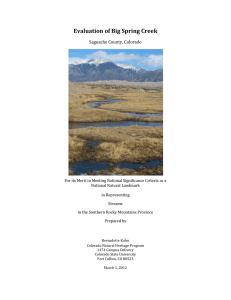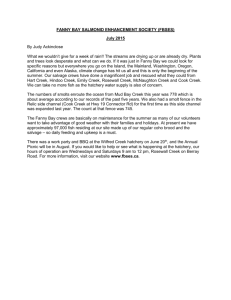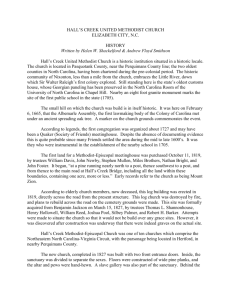Comparative Evaluation of Different Methods to Detect Bacterial
advertisement
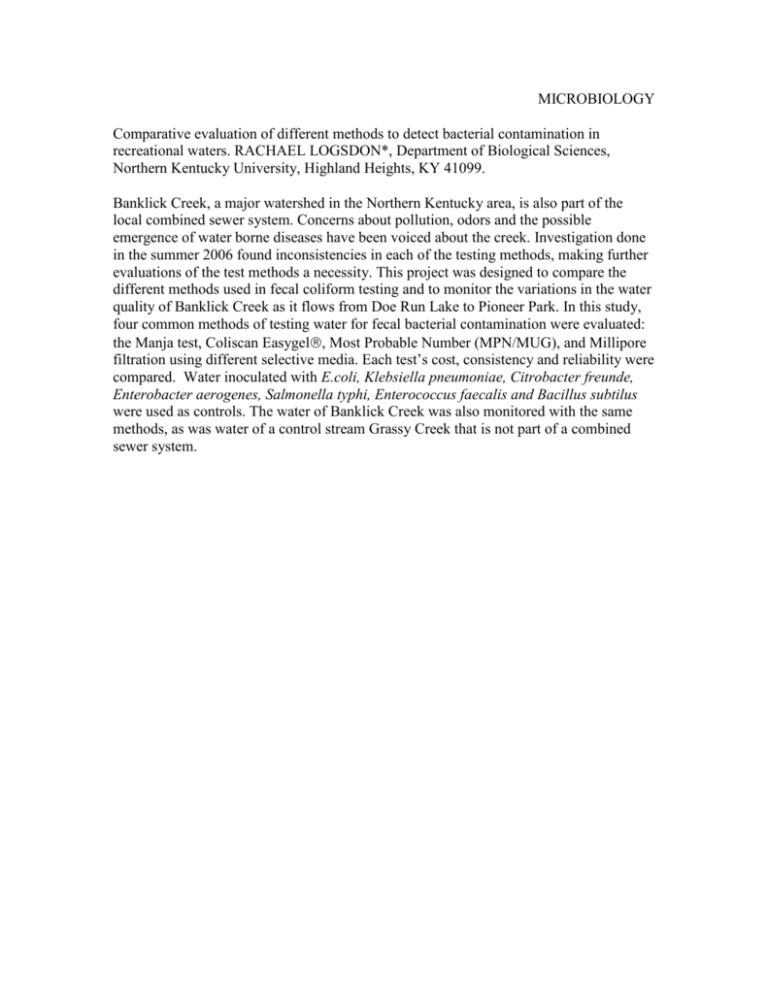
MICROBIOLOGY Comparative evaluation of different methods to detect bacterial contamination in recreational waters. RACHAEL LOGSDON*, Department of Biological Sciences, Northern Kentucky University, Highland Heights, KY 41099. Banklick Creek, a major watershed in the Northern Kentucky area, is also part of the local combined sewer system. Concerns about pollution, odors and the possible emergence of water borne diseases have been voiced about the creek. Investigation done in the summer 2006 found inconsistencies in each of the testing methods, making further evaluations of the test methods a necessity. This project was designed to compare the different methods used in fecal coliform testing and to monitor the variations in the water quality of Banklick Creek as it flows from Doe Run Lake to Pioneer Park. In this study, four common methods of testing water for fecal bacterial contamination were evaluated: the Manja test, Coliscan Easygel, Most Probable Number (MPN/MUG), and Millipore filtration using different selective media. Each test’s cost, consistency and reliability were compared. Water inoculated with E.coli, Klebsiella pneumoniae, Citrobacter freunde, Enterobacter aerogenes, Salmonella typhi, Enterococcus faecalis and Bacillus subtilus were used as controls. The water of Banklick Creek was also monitored with the same methods, as was water of a control stream Grassy Creek that is not part of a combined sewer system.






